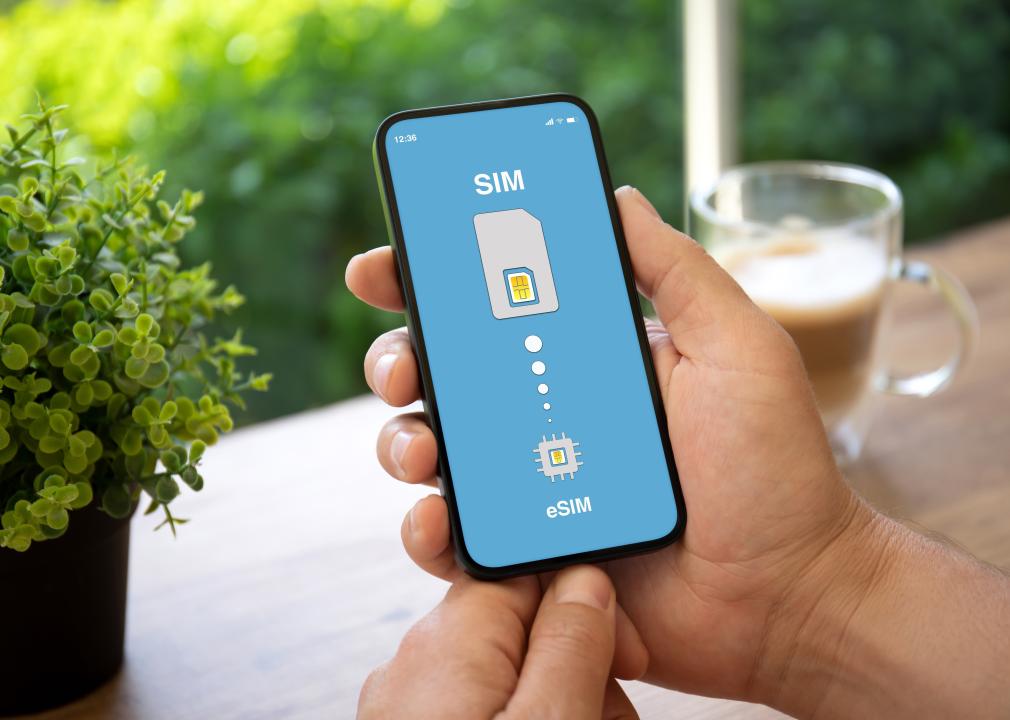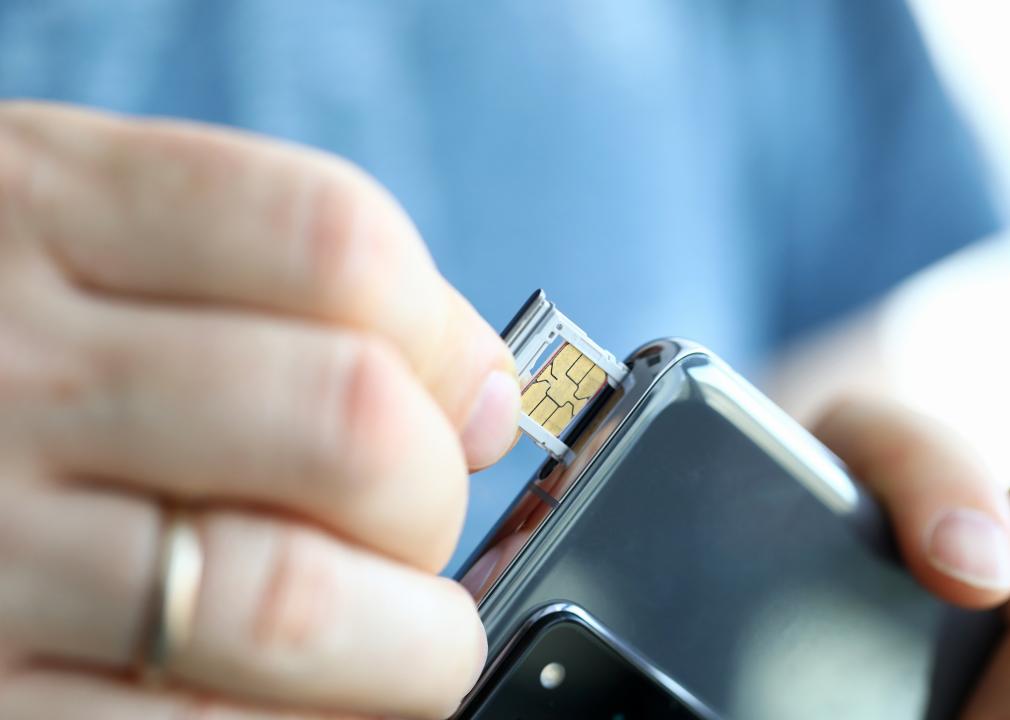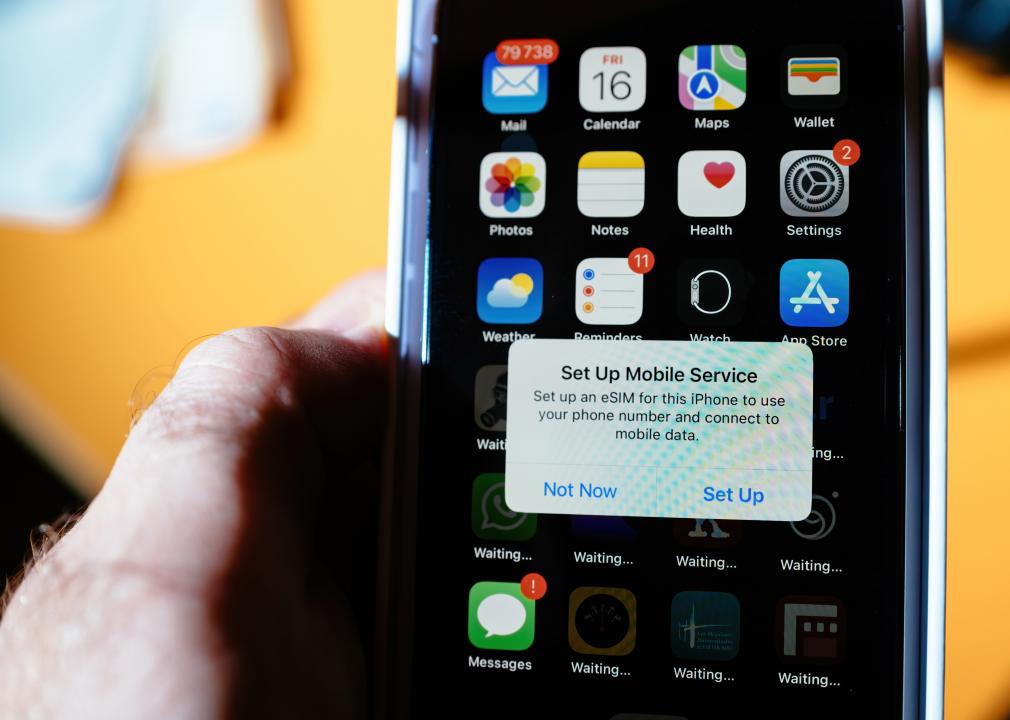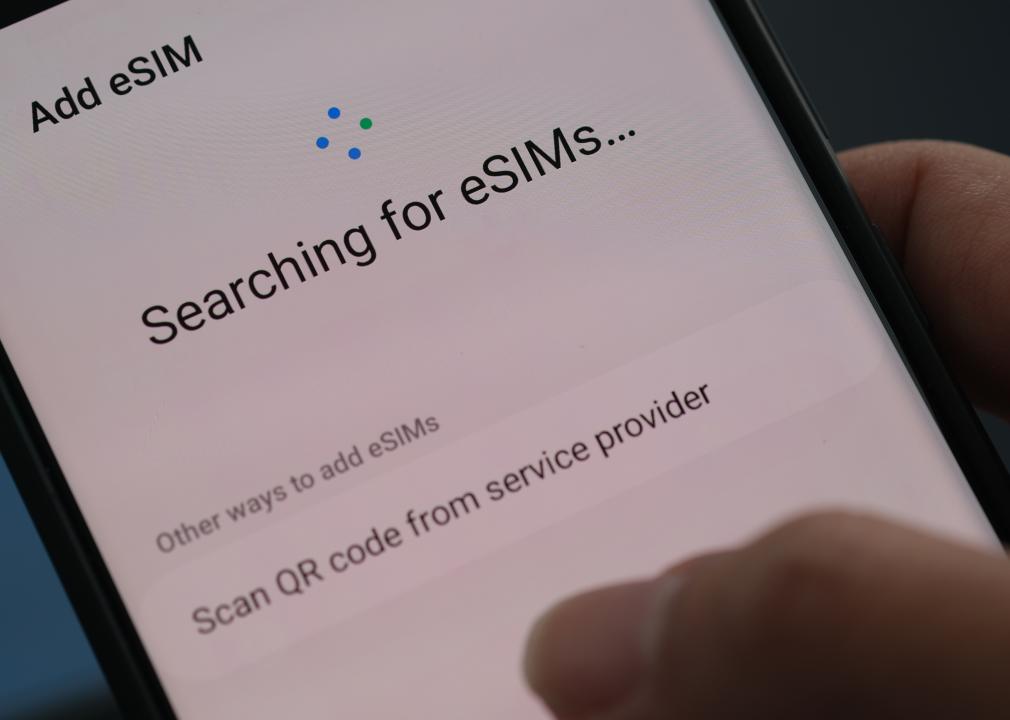What is an eSIM and do I need one? 5 common questions about the technology answered.

Canva
What is an eSIM and do I need one? 5 common questions about the technology answered.
A smiling young woman looks at her smartphone while outside.
Many mobile users may be familiar with SIM cards, physical chips that hold data about your mobile plan, such as your wireless carrier and phone number. They also help connect your phone to a mobile network.
Over the years, these cards, which started the size of thumbnails, gradually became smaller, and their names reflected the change. Mini SIMs gave way to micro SIMs, nano SIMs, and now eSIMs.
Airalo compiled information from the Federal Communications Commission, PCMag, Wirecutter, and MakeUseOf to answer five frequently asked questions about eSIMs.
These eSIMs, or embedded SIMs, are tiny enough to be soldered right into equipment in places where a SIM card slot may not easily fit. By placing them in increasingly smaller areas, machines with these super-small chips become programmable, even from afar. This makes changing your phone number or switching between mobile operators easier and makes your data just a bit more secure.
Because eSIMs are built right into the phone, thieves must steal your phone to access your information. In contrast, SIM cards could be stolen by themselves and inserted into different machines to access someone’s calls and messages, including one-time security PINs that often link to phone numbers.
Though eSIMs can be found in drones and wearables, they are most often associated with mobile phones. First popularized in 2017, eSIMs are now an option for many top smartphones, including the iPhone 15 and the Samsung Galaxy S23. But why are they the wave of the future?
![]()
DenPhotos // Shutterstock
How do you set up eSIMs?
Hands holding a phone with the screen showing an image of a SIM card with five dots decreasing in size, leading to a smaller image of an eSIM.
Without a physical SIM card to install into a phone, the eSIM card setup primarily takes place on the device. When purchasing or upgrading your mobile plan, your wireless carrier may give you an eSIM activation card with a QR code for you to scan and confirm the setup of your eSIM.
Alternatively, you may get the QR code through a carrier website or email. Another option is downloading the eSIM registration app associated with your wireless carrier and setting up your mobile plan.
megaflopp // Shutterstock
Can smartphones support physical SIM cards and eSIMs at the same time?
Hands pulling a SIM card out of a smartphone.
Many smartphones that support eSIMs also have nano SIM compatibility, the thinnest and lightest physical option. Phones with a dual SIM feature allow for a physical SIM and an eSIM to support two phone numbers on a single device.
Flagship devices all have dual SIM support for physical and eSIM cards. Notably, Apple’s most recent iPhone 15 models sold in the U.S. only use eSIMs.
Hadrian // Shutterstock
How are eSIMs useful for travel?
A pop-up message on an iPhone prompting the user to set up mobile service with an eSIM.
One of the main benefits of using a smartphone that supports eSIMs is that you’ll have an easier time switching mobile networks, especially when traveling.
Depending on the model, iPhones can support eight or possibly more eSIM profiles, for example. While traveling, you can set up and switch to a local network digitally at your destination rather than having to switch your physical SIM for a local SIM.
wisely // Shutterstock
What are the downsides of eSIMs?
Hands holding an android smartphone with a message that says, add eSIM, searching for eSIMS.
The physical SIM standard gives you the freedom to move your card from device to device. However, the on-device eSIM leaves you at the mercy of your carrier, meaning you’ll have to set up your eSIM again each time you want to change phones.
If you want to port your eSIM to a new device, you must download the profile from your previous phone. This process can have a high error rate and can lead to tedious calls with your wireless carrier’s customer service to troubleshoot issues.
Similarly, if your phone breaks, you could lose your eSIM profile and data, leaving it up to your carrier to determine whether your profile is salvageable.
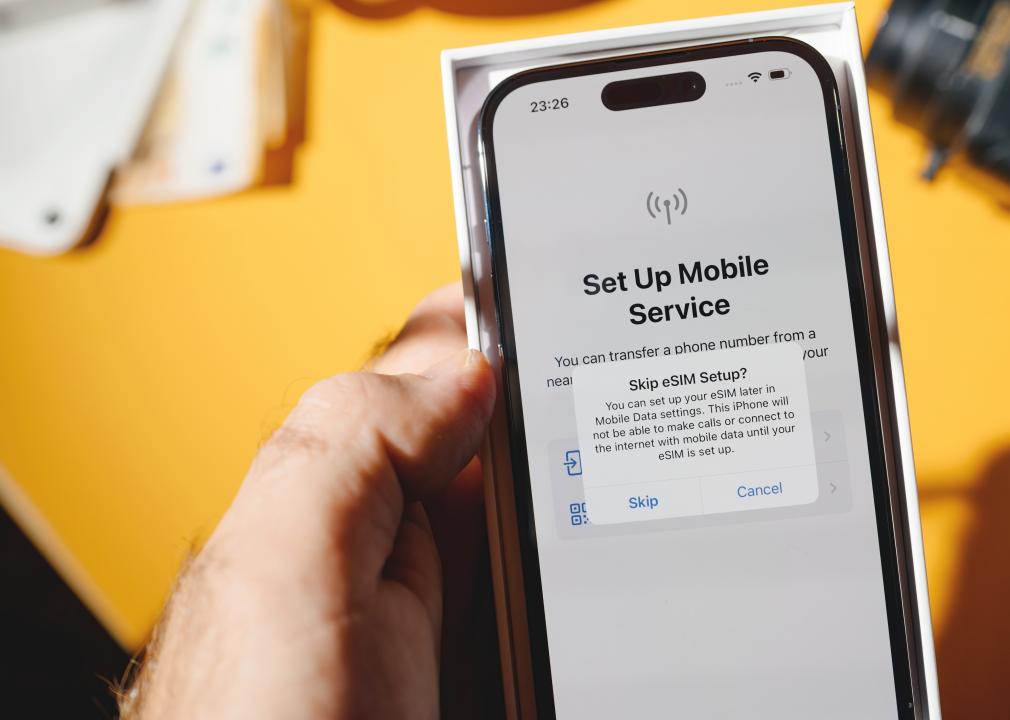
Hadrian // Shutterstock
When will eSIMs become the smartphone standard?
A hand holding an iPhone with a message on the screen that says, Skip eSIM setup?
Though smartphone brands continue offering physical SIM options now, many are moving toward supporting eSIMs. Most notably, the latest iPhones sold in the U.S. only use eSIMs. Google Pixel owners are also being encouraged to move their numbers to eSIMs. These suggest that the industry is ready to make eSIM support the standard.
As time passes, more brands may slowly begin to release smartphones without physical SIM options, ushering in the official age of the eSIM.
Story editing by Carren Jao. Copy editing by Kristen Wegrzyn. Photo selection by Clarese Moller.
This story originally appeared on Airalo and was produced and
distributed in partnership with Stacker Studio.
